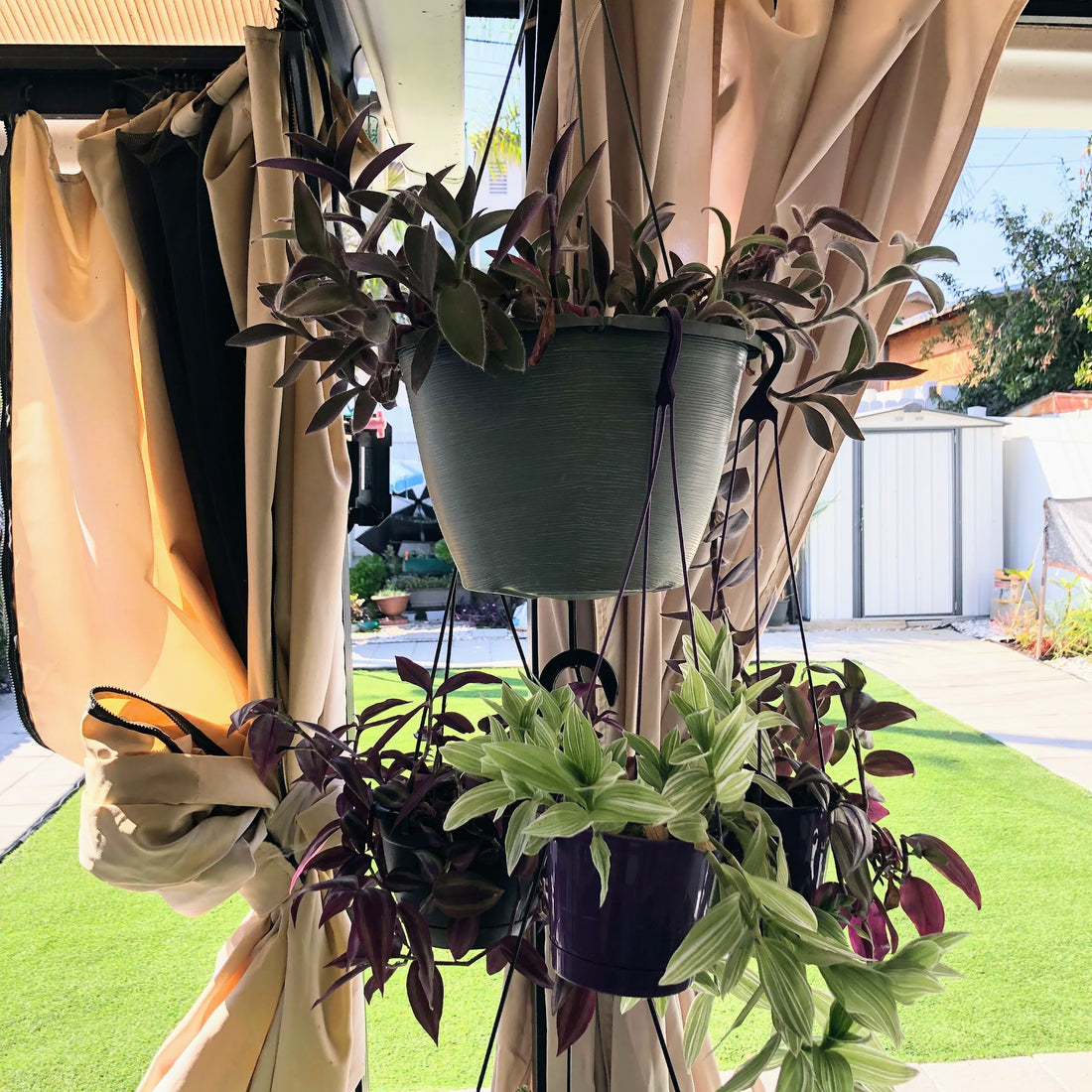
Houseplant Showdown: Exploring Pothos? Peperomia? Tradescantia?
Some people have asked me about the different houseplants we carry, their difficulty levels, and which ones are the prettiest and easiest to care for and which one is my favorite, the answer is at the end of the post. Here’s a personal take on the differences between Pothos, Peperomia, and Tradescantia based on my experience:
Based on Appearance
Pothos (Epipremnum aureum)
They have large, heart-shaped leaves, Pothos instantly gives off a lush, tropical vibe. I love how their glossy green, yellow, or white variegation brightens up any space. They have long trailing vines that make them perfect for hanging or climbing.
Peperomia
These little guys are more compact and come in such a wide variety of leaf shapes and colors! Some have cute, round leaves, while others are rippled or variegated with stripes. Peperomia is perfect for smaller spaces and is more of a decorative, tabletop plant.
Tradescantia or Wandering Jews
They have bold, vibrant stars of any collection. Their narrow, elongated leaves with striking purple, green, and silvery stripes are hard to miss. I love using them in hanging baskets because their trailing vines look gorgeous spilling over the edges.
How well they Grow
Pothos
These are fast growers! If you give them bright, indirect light, their vines can grow several feet in just a year.
Peperomia
On the other hand, Peperomias are much slower growers. They stay compact, and their growth is more controlled, which I appreciate when I want a plant that doesn't need constant trimming.
Tradescantia
Tradescantia grows faster than Pothos, especially in bright light. Their trailing vines can take off fast, making them excellent plants for beginners who want to learn how to grow and feel encouraged along the way. I find it exciting when I want to see quick, dramatic growth!
Light Requirement
Pothos
They’re so adaptable! While they thrive in bright, indirect light, they can tolerate lower light too. I’ve noticed their variegation fades a bit in lower light, but they still look great.
Peperomia
These plants like bright, indirect light too, but they can handle medium to low light. Too much sun, though, and their leaves might burn, so I keep them out of direct sunlight.
Tradescantia
- These beauties need bright light to maintain their vibrant colors. I’ve found that if they don’t get enough light, their colors fade a bit, but they’re still pretty resilient.
Watering
Pothos
I water mine when the top inch of soil dries out. They can handle a little drought but prefer to be kept slightly moist.
Peperomia
These are more like succulents with their thick leaves, so I water them less often. I let the top 1-2 inches of soil dry out before giving them a drink. Overwatering is something to watch out for, though.
Tradescantia
They need a bit more regular watering than Peperomia, but I still let the top inch dry out. They like consistent moisture but can be forgiving if I forget once in a while.
Humidity & Temperature
Pothos
They’re pretty easygoing when it comes to humidity and temperature. They do well in typical indoor conditions.
Peperomia
These thrive in moderate humidity, but they can handle drier air too. I keep mine in rooms with average room temperatures, and they do just fine.
Tradescantia Higher humidity really makes Tradescantia thrive, and they love warm temperatures. I find their colors pop more in these conditions.
Propagation
Pothos
Super easy to propagate! Just cut below a node and place it in water or soil, and you’ll have new plants in no time.
Peperomia
Since they are a little slow grower, they take a bit longer, but they can be propagated through leaf or stem cuttings. I’ve found that water or soil both work, but patience is key.
Tradescantia
This one’s a propagation champ! You can root stem cuttings in water or soil, and it’s so quick to grow new plants just like Pothos.
Toxicity
Pothos
Be careful with pets or kids, as Pothos is toxic if ingested.
Peperomia
One of the things I love about Peperomia is that it’s non-toxic, so it’s a safe choice for homes with pets.
Tradescantia
While not highly toxic, Tradescantia can cause mild irritation if pets ingest it If the sap gets into skin, If the sap gets on your skin, rinse it off immediately with soap and water.
|
Each of these plants has its own unique charm, and they’ve all been easy to care for in my home. Whether you're just starting or looking to expand your collection, you can’t go wrong with any of them!
Tradescantia plants are hands down my favorite houseplants. I’ve always loved the vibrant greens, purples, and pinks, and these colors show up beautifully in so many varieties of Tradescantia. I can easily spot a Wandering Jew at any nursery—it’s those bold, stunning colors that always catch my eye. To me, they’re truly 'The Bold and Beautiful!' And the best part? They’re so easy to care for, making them a joy to have at home.
Comment below with your favorites!
